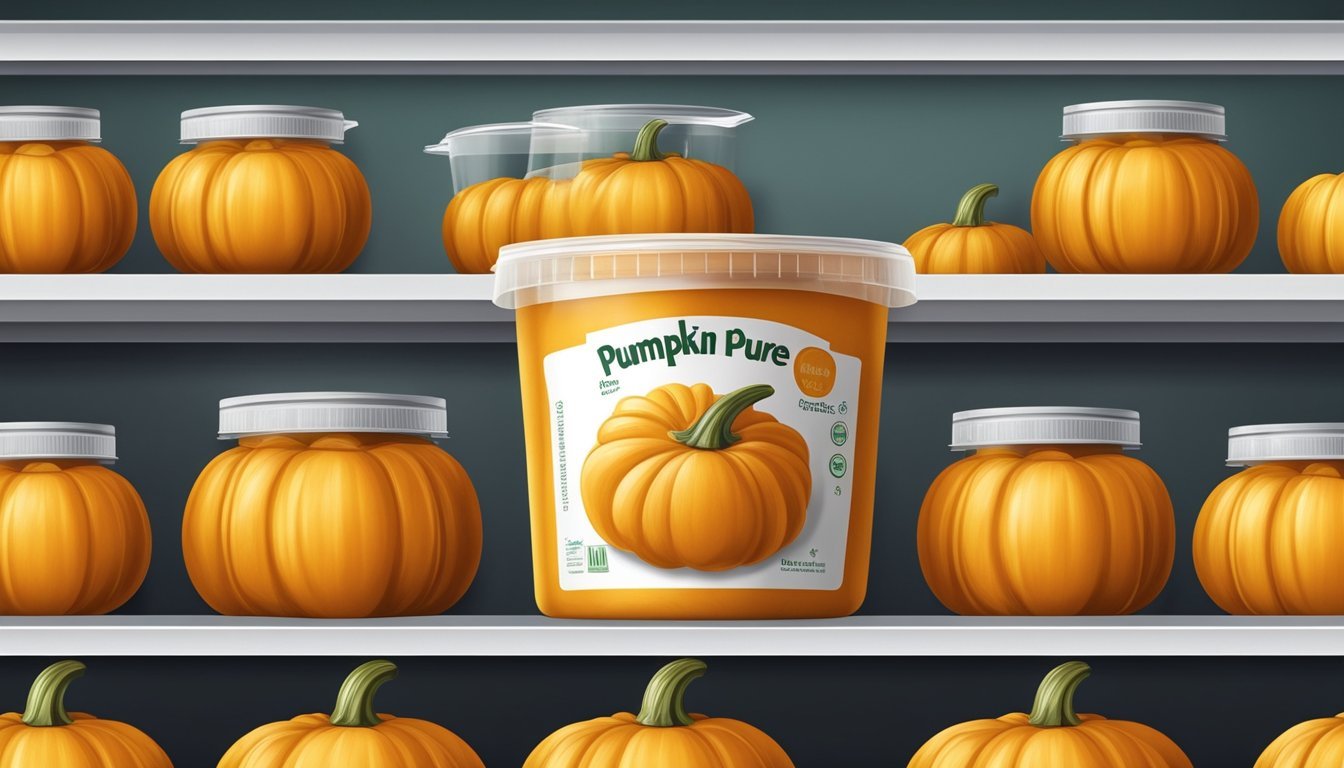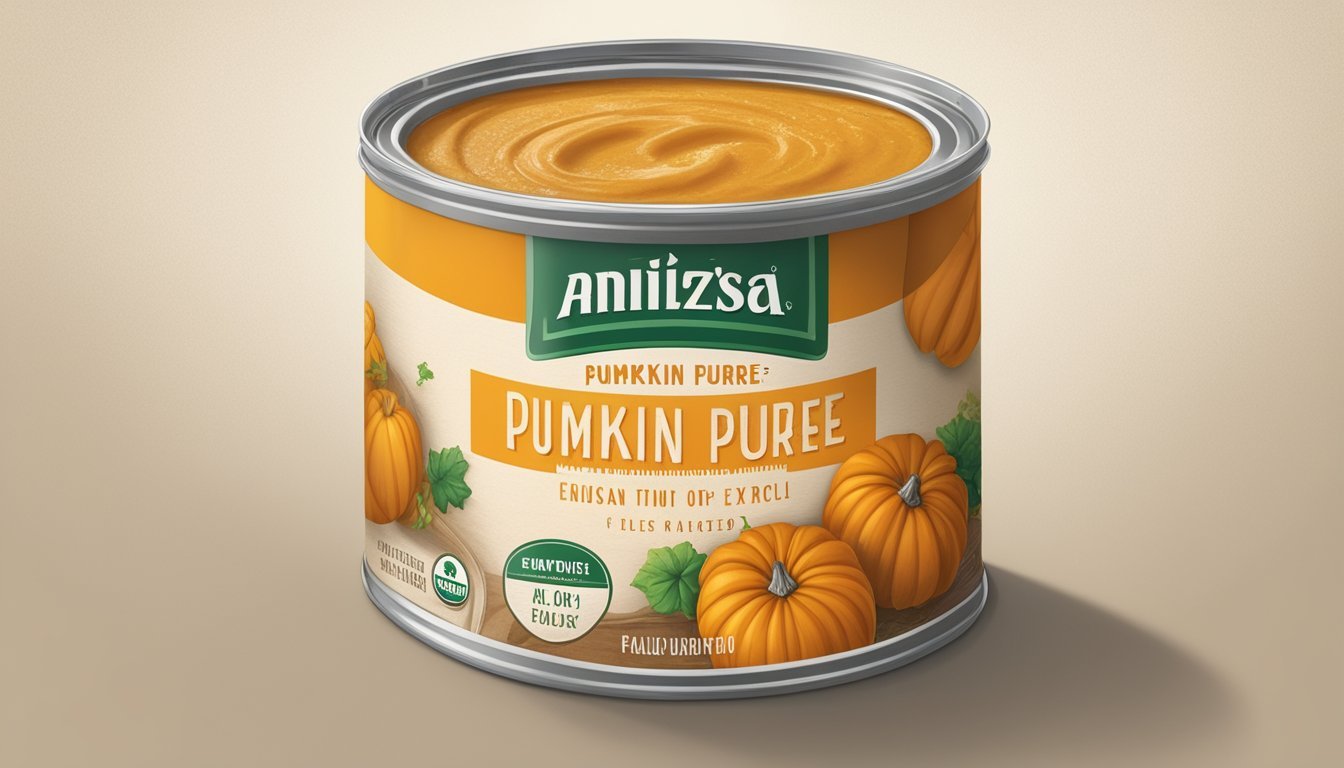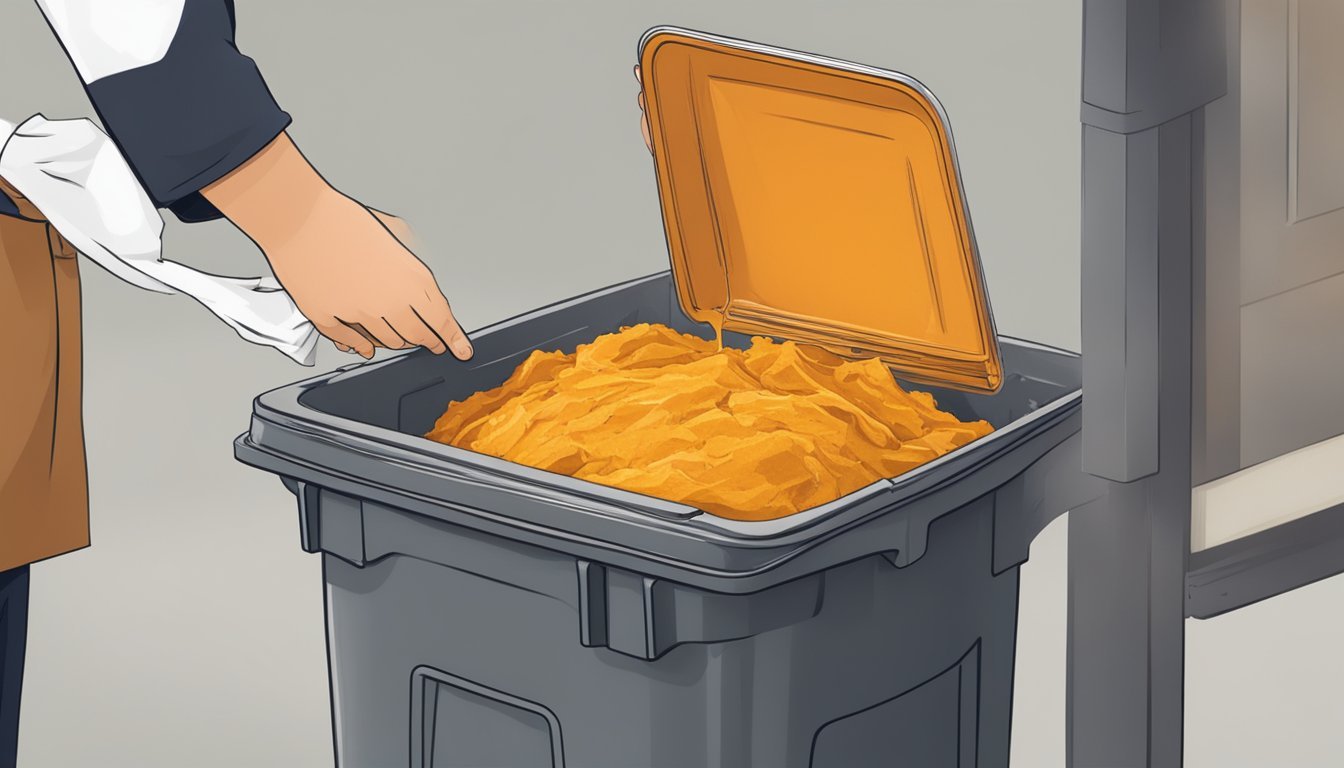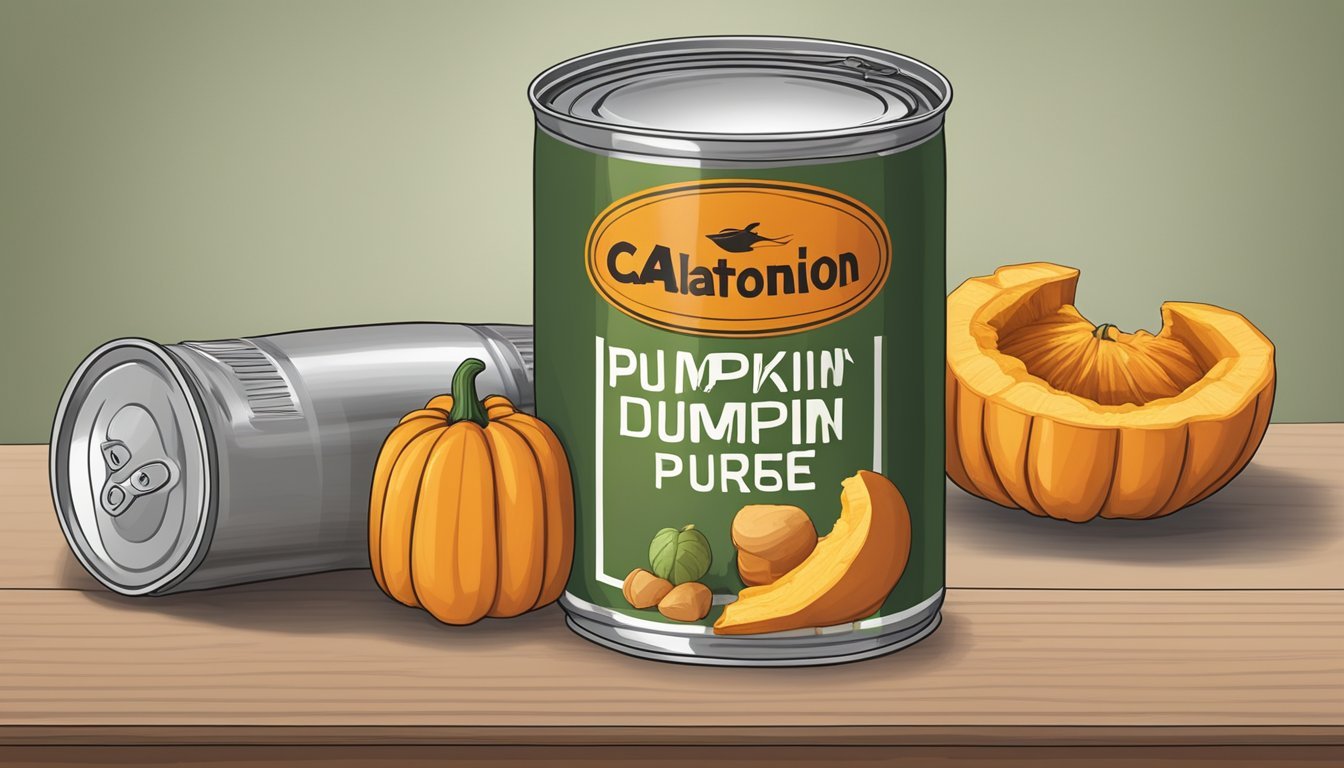Is it Safe to Use Expired Pumpkin Puree?
Understanding the Risks
When it comes to the safety of consuming expired pumpkin puree, consumers should proceed with caution. While the expiration or best-by date on canned goods is an indication of quality rather than safety, it is a factor to consider before use. Canned pumpkin puree is known for its long shelf life, owing to the canning process which effectively sterilizes the food and seals it away from contaminants. However, even canned foods have their limits.
When assessing expired pumpkin puree, one has to take into account storage conditions and can integrity. Properly stored canned pumpkin, in a cool and dry place, tends to last well beyond the printed best-by date. But any sign of can damage, such as rusting, bulging, or leaking, can compromise the contents and should be taken as a clear sign to discard the puree. If the can appears intact, the puree might be safe to consume, but one should always check for off odors, discolorations, or mold, which can indicate spoilage.
If the pumpkin puree passes the initial inspection after the expiration date, users should still consider the potential degradation in flavor and texture. As time passes, the quality of the puree may not meet the standards expected for culinary uses. Therefore, individuals may consider the importance of the puree's role in their recipes and whether it is worth using the expired product or replacing it with a fresh can.
Understanding Pumpkin Puree and Expiration Dates
Pumpkin puree, whether homemade or canned, has a limited shelf life that is conveyed through expiration or best-by dates. Interpreting these dates is crucial for maintaining food safety and quality.
Definition of Pumpkin Puree
Pumpkin puree is a blended preparation made from cooked pumpkin flesh, often used as an ingredient in recipes such as pies and soups. Canned pumpkin puree is commercially packaged and pasteurized with an extended shelf life, whereas homemade pumpkin puree typically lacks preservatives, resulting in a shorter shelf life. When stored properly, unopened canned pumpkin puree can last 3 to 5 years but may still be safe to consume past this period if the can remains undamaged.
Reading Expiration and Best-By Dates
Expiration Date: This label, sometimes printed as "use by," suggests the date after which the pumpkin puree's quality may decline, and there may be concerns about food safety.
Best-By Date: The date the manufacturer determines the product to be at peak quality; after this date, the puree may still be safe but can experience changes in flavor and texture.
When assessing expired canned pumpkin, one should examine the can for signs of damage or swelling. The label is also a resource for understanding the product's shelf life and storage recommendations to ensure safety. While the actual shelf life can be longer than indicated, a thorough check for mold and off odors is essential if one is considering using pumpkin puree past its prescribed date.
Food Safety Concerns with Expired Puree
When assessing the safety of expired pumpkin puree, it's imperative to consider the risks of foodborne illnesses that can arise from consuming spoiled products and understand the various signs of spoilage that indicate the puree is no longer safe to eat.
Risk of Foodborne Illness
Pumpkin puree that has passed its expiration date may harbor bacteria leading to foodborne illness. If the can or packaging is compromised, such as showing signs of rust, bulging, leakage, or damage, these are indicators that the product could be unsafe. Even if the packaging is intact, prolonged storage past the expiration date increases the risk of bacterial growth, including pathogens that could lead to food poisoning.
Signs of Spoilage in Pumpkin Puree
One can detect spoilage in pumpkin puree by observing:
Visual Cues: Any presence of mold or discoloration in the puree is a definitive sign that the product has spoiled and should not be consumed.
Odor: A sour or off-putting smell is a clear indicator of spoilage.
Texture: If the texture of the puree has changed, displaying a watery consistency or has separated, this may suggest contamination and spoilage.
Observing these signs before deciding to consume pumpkin puree past its expiration date is crucial for food safety.
Proper Storage Methods
Proper storage of pumpkin puree is essential to maintain its quality and safety. The methods for storing unopened and opened pumpkin puree vary to ensure longevity and prevent spoilage.
Storing Unopened Pumpkin Puree
Unopened pumpkin puree should be stored in a cool, dry place such as a pantry. The storage area should maintain a consistent temperature that is ideally below room temperature but not subject to freezing conditions to prevent the can from deteriorating. Unopened cans of pumpkin puree can last between two to five years when stored properly.
Preserving Leftover Pumpkin Puree
Once a can of pumpkin puree is opened, it must be stored correctly to extend its shelf life and preserve its quality:
In the Refrigerator: Transfer the leftover puree into an airtight container and refrigerate. Leftover puree should be used within one week when stored in the refrigerator.
Freezing:
Place the puree in a freezer-safe bag or an airtight container.
Label the container with the date.
Freeze and try to use within one year for optimal quality.
To maintain safety, one should thaw frozen pumpkin puree in the refrigerator rather than at room temperature. Once thawed, the puree should be used within two to three days for the best quality.
Utilizing Expired Pumpkin Puree
When considering the use of expired pumpkin puree, one must be cautious and conduct a thorough assessment of its safety. The puree may still have applications in cooking if deemed safe, but its quality for consumption must be critically evaluated.
Culinary Uses for Questionable Puree
Pumpkin holds a versatile position in the world of cooking and baking, known for its role in a variety of recipes. While an expired can of pumpkin puree might raise concerns, it can potentially be used in more forgiving culinary applications where any subtle changes in flavor are less noticeable. In cases where the pumpkin puree has just crossed the expiration date and has been stored properly without signs of spoilage, one might consider using it for recipes with strong flavors, such as:
Oatmeal: Incorporate into cooked oatmeal for a breakfast twist.
Pumpkin Spice Latte: Enhance the flavor of a homemade latte.
Desserts: Use in baked goods like cookies or cakes that feature robust spices.
However, expired puree should not be used in delicate recipes where the precise flavor of pumpkin is a critical element, such as in a classic pumpkin pie filling.
Assessing Suitability for Consumption
Before incorporating expired pumpkin puree into any recipe, it's crucial to determine if it’s safe to eat. One should consider the following assessment steps:
Examine the Can:
Ensure it's free of dents, rust, or swelling.
Visual Check:
Inspect for mold or noticeable color changes.
Smell Test:
Sniff for off-putting or fermented odors.
Texture Evaluation:
Feel for an abnormal texture, which could indicate spoilage.
If the pumpkin puree fails any of these checks, it should be discarded immediately. When the puree appears to be in good condition, with no signs of spoilage, using it in a cooking or baking application could be considered. Nonetheless, if there is any doubt regarding the quality of the pumpkin puree, erring on the side of caution and disposing of the product is advised.
Disposing of Unsafe Pumpkin Puree
When pumpkin puree has passed its prime, proper disposal is critical to avoid potential health risks and any unpleasant kitchen odors. Disposing of unsafe pumpkin puree should be done with care to prevent any harm to the environment or wildlife.
Local Guidelines
One must first consult their local trash disposal regulations. Some areas have specific rules for disposing of food waste which should be adhered to. This ensures the pumpkin puree is handled in a way that's compliant with local waste management practices.
Trash Disposal
For immediate disposal, the pumpkin puree should be placed in a sealed plastic bag before being discarded to reduce the chance of attracting pests. This is particularly important for those living in areas where wildlife, such as bears or raccoons, may be attracted to the scent of food waste.
Composting
If a composting option is available, it is a great way to dispose of expired pumpkin puree in an eco-friendly manner. However, if the puree has seen the growth of mold, it is essential to avoid adding it to a compost that will be used on edible plants to prevent the spread of mold spores.
Check for Recycling Programs
Some communities provide food recycling programs which can handle expired food items such as pumpkin puree. It’s beneficial to check if such programs exist and understand the process they follow for recycling food waste.
In conclusion, when disposing of no longer safe-to-eat pumpkin puree, one should follow local regulations, seal it effectively if using the trash, consider composting if viable, and investigate local food recycling programs. Ensuring careful disposal mitigates health risks and upholds civic responsibility.
Preventative Measures and Alternatives
This section emphasizes strategies to prevent wastage of pumpkin puree and provides alternative uses for puree that may be nearing or slightly past the expiration date, while still maintaining food safety standards.
Avoiding Pumpkin Puree Waste
Proper Storage: To prolong the shelf-life of pumpkin puree, it should be stored in the refrigerator in an airtight container and used within 5 to 7 days. For longer storage, they can freeze the puree. To freeze efficiently, individuals may distribute the puree into freezer bags, ensuring to leave about ½ inch of headspace. Once they need to use the frozen pumpkin, they must thaw it properly in the refrigerator.
Freshness Labeling: Date labeling when the puree is opened or decanted can help individuals keep track of its freshness. They are encouraged to always check the expiration date on the can before use.
Alternatives to Discarding Expired Puree
Re-Purposing Puree: If the texture or flavor of expired puree is slightly altered but it still appears safe to consume, they may opt to use it in applications where these changes are less noticeable. Cooking options include:
Incorporating it into baked goods, where pumpkin spice can mask subtle flavor changes,
Adding it to soups, where it can blend with other assertive flavors, or
Mixing it into pet food as a fiber supplement.
Homemade Beauty Treatments: Expired pumpkin puree might still be used in homemade face masks. Its richness in vitamins can be beneficial for skin care. They must mix it with ingredients, such as yogurt, oil, or butter, to create a paste.
Those following these guidelines need to keep in mind food safety and assess the quality of the pumpkin puree carefully before deciding to use or dispose of it.
Conclusion
When assessing the safety of using expired pumpkin puree, consumers must be cautious and vigilant. An unopened and properly stored can of pumpkin puree, despite being past its expiry date, might be safe for consumption. However, key indicators such as the can's condition and any off-odors or mold must be evaluated meticulously. If any abnormalities are present, the product should be discarded immediately.
For opened pumpkin puree, storage practice is crucial. The puree should be refrigerated promptly in an airtight container and used within 5-7 days. Exceeding this timeframe or improper storage significantly increases the risk of spoilage, thus it's imperative to inspect the puree for any signs of deterioration.
In summary, they should prioritize the following:
Inspect: Any bulging, leakage, or rust on the can indicates potential contamination - the puree should not be used.
Sniff and Examine: An off-smell or visible mold growth is a clear sign the puree is no longer safe.
Storage: Transfer opened puree to an airtight container and refrigerate.
Timeliness: Use refrigerated puree quickly, within a week, to ensure quality and safety.
Should there be any doubt about the condition of the pumpkin puree, err on the side of caution and avoid using the product to prevent any foodborne illnesses. It is always preferable to consume products within their best by dates to ensure optimal quality and safety.






